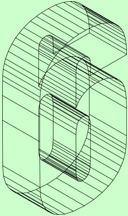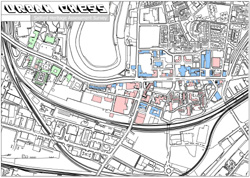





|
|
|
|
|
|
|||
|
|
|||
The three grade I listed buildings are a prime of example of this. Lovely Ordsall Hall is hemmed in by light industrial sheds, dilapidated tower blocks and a busy road. St Augustine's Church sits in overgrown grounds surrounded on all sides by mediocre houses and factories. Meanwhile, at the heart of historic Salford on Chapel Street the character of the area fails to reach a critical heritage mass due to the numerous poor buildings diluting the quality.
In order to both release the potential of Salford's hidden gems, and allow the centre to compete on the world stage of historic towns, a process of moving buildings will have to take place. Research has been undertaken to show that this is a feasible proposition. Many large buildings have been moved both in the UK in particular in North America.
The environment on Chapel Street is further degraded by the presence of the A6, a very busy road which runs straight through the historical core. As an integral part of our consolidation process we propose to reroute the A6 to the south alongside the existing railway arches. This will have the added effect of liberating the Salford University campus the current tyranny of the road. With the intrusive A6 gone, both the university campus and the Chapel Street area as a whole will be able to dramatically enhance their heritage value.



